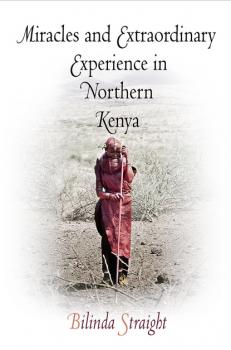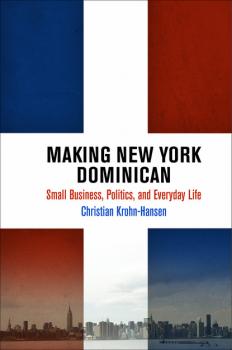Биология
Различные книги в жанре БиологияEthnography in Today's World
In Ethnography in Today's World , Roger Sanjek examines the genre and practice of ethnography from a historical perspective, from its nineteenth-century beginnings and early twentieth-century consolidation, through political reorientations during the 1960s and the impact of feminism and postmodernism in later decades, to its current outlook in an increasingly urban world. Drawing on a career of ethnographic research across Brazil, Ghana, New York City, and with the Gray Panthers, Sanjek probes politics and rituals in multiethnic New York, the dynamics of activist meetings, human migration through the ages, and shifting conceptions of race in the United States. He interrogates well-known works from Boas, Whyte, Fabian, Geertz, Marcus, and Clifford, as well as less celebrated researchers, addressing methodological concerns from ethnographers' reliance on assistants in the formative days of the discipline to contemporary comparative issues and fieldwork and writing strategies. Ethnography in Today's World contributes to our understanding of culture and society in an age of globalization. These provocative examinations of the value of ethnographic research challenge conventional views as to how ethnographic fieldwork is and can be conceived, conducted, contextualized, and communicated to academic audiences and the twenty-first-century public.
Miracles and Extraordinary Experience in Northern Kenya
The Samburu of northern Kenya struggle to maintain their pastoral way of life as drought and the side effects of globalization threaten both their livestock and their livelihood. Mirroring this divide between survival and ruin are the lines between the self and the other, the living and the dead, «this side» and inia bata , «that side.» Cultural anthropologist Bilinda Straight, who has lived with the Samburu for extended periods since the 1990s, bears witness to Samburu life and death in Miracles and Extraordinary Experience in Northern Kenya . Written mostly in the field, Miracles and Extraordinary Experience in Northern Kenya is the first book-length ethnography completely devoted to Samburu divinity and belief. Here, child prophets recount their travels to heaven and back. Others report transformations between persons and inanimate objects. Spirit turns into action and back again. The miraculous is interwoven with the mundane as the Samburu continue their day-to-day twenty-first-century existence. Straight describes these fantastic movements inside the cultural logic that makes them possible; thus she calls into question how we experience, how we feel, and how anthropologists and their readers can best engage with the improbable. In her detailed and precise accounts, Straight writes beyond traditional ethnography, exploring the limits of science and her own limits as a human being, to convey the significance of her time with the Samburu as they recount their fantastic yet authentic experiences in the physical and metaphysical spaces of their culture.
Everyday Occupations
In the twenty-first century, political conflict and militarization have come to constitute a global social condition rather than a political exception. Military occupation increasingly informs the politics of both democracies and dictatorships, capitalist and formerly socialist regimes, raising questions about its relationship to sovereignty and the nation-state form. Israel and India are two of the world's most powerful postwar democracies yet have long-standing military occupations. Pakistan, Bangladesh, and Turkey have passed through periods of military dictatorship, but democracy has yielded little for their ethnic minorities who have been incorporated into the electoral process. Sri Lanka and Bangladesh (like India, Pakistan, and Turkey) have felt the imprint of socialism; declarations of peace after long periods of conflict in these countries have not improved the conditions of their minority or indigenous peoples but rather have resulted in «violent peace» and remilitarization. Indeed, the existence of standing troops and ongoing state violence against peoples struggling for self-determination in these regions suggests the expanding and everyday nature of military occupation. Such everydayness raises larger issues about the dominant place of the military in society and the social values surrounding militarism. Everyday Occupations examines militarization from the standpoints of both occupier and occupied. With attention to gender, poetics, satire, and popular culture, contributors who have lived and worked in occupied areas in the Middle East and South Asia explore what kinds of society are foreclosed or made possible by militarism. The outcome is a powerful contribution to the ethnography of political violence. Contributors: Nosheen Ali, Kabita Chakma, Richard Falk, Sandya Hewamanne, Mohamad Junaid, Rhoda Kanaaneh, Hisyar Ozsoy, Cheran Rudhramoorthy, Serap Ruken Sengul, Kamala Visweswaran.
Maoists at the Hearth
The Maoist insurgency in Nepal lasted from 1996 to 2006, and at the pinnacle of their armed success the Maoists controlled much of the countryside. Maoists at the Hearth , which is based on ethnographic research that commenced more than a decade before the escalation of the civil war in 2001, explores the daily life in a hill village in central Nepal, during the «People's War.» From the everyday routines before the arrival of the Maoists in the late 1990s through the insurgency and its aftermath, this book examines the changing social relationships among fellow villagers and parties to the conflict. War is not an interruption that suspends social processes. Life in the village focused as usual on social challenges, interpersonal relationships, and essential duties such as managing agricultural work, running households, and organizing development projects. But as Judith Pettigrew shows, social life, cultural practices, and routine activities are reshaped in uncertain and dangerous circumstances. The book considers how these activities were conducted under dramatically transformed conditions and discusses the challenges (and, sometimes, opportunities) that the villagers confronted. By considering local spatial arrangements and their adaptation, Pettigrew explores people's reactions when they lost control of the personal, public, and sacred spaces of the village. A central consideration of Maoists at the Hearth is an exploration of how local social tensions were realized and renegotiated as people supported (and sometimes betrayed) each other and of how villager-Maoist relationships (and to a lesser extent villager-army relationships), which drew on a range of culturally patterned preexisting relationships, were reforged, transformed, or renegotiated in the context of the conflict and its aftermath.
Locked In, Locked Out
In November 1993, the largest public housing project in the Puerto Rican city of Ponce—the second largest public housing authority in the U.S. federal system—became a gated community. Once the exclusive privilege of the city's affluent residents, gates now not only locked «undesirables» out but also shut them in. Ubiquitous and inescapable, gates continue to dominate present-day Ponce, delineating space within government and commercial buildings, schools, prisons, housing developments, parks, and churches. In Locked In, Locked Out , Zaire Zenit Dinzey-Flores shows how such gates operate as physical and symbolic ways to distribute power, reroute movement, sustain social inequalities, and cement boundary lines of class and race across the city. In its exploration of four communities in Ponce—two private subdivisions and two public housing projects— Locked In, Locked Out offers one of the first ethnographic accounts of gated communities devised by and for the poor. Dinzey-Flores traces the proliferation of gates on the island from Spanish colonial fortresses to the New Deal reform movement of the 1940s and 1950s, demonstrating how urban planning practices have historically contributed to the current trend of community divisions, shrinking public city spaces, and privatizing gardens. Through interviews and participant observation, she argues that gates have transformed the twenty-first-century city by fostering isolation and promoting segregation, ultimately shaping the life chances of people from all economic backgrounds. Relevant and engaging, Locked In, Locked Out reveals how built environments can create a cartography of disadvantage—affecting those on both sides of the wall.
Making New York Dominican
Large-scale emigration from the Dominican Republic began in the early 1960s, with most Dominicans settling in New York City. Since then the growth of the city's Dominican population has been staggering, now accounting for around 7 percent of the total populace. How have Dominicans influenced New York City? And, conversely, how has the move to New York affected their lives? In Making New York Dominican , Christian Krohn-Hansen considers these questions through an exploration of Dominican immigrants' economic and political practices and through their constructions of identity and belonging. Krohn-Hansen focuses especially on Dominicans in the small business sector, in particular the bodega and supermarket and taxi and black car industries. While studies of immigrant business and entrepreneurship have been predominantly quantitative, using survey data or public statistics, this work employs business ethnography to demonstrate how Dominican enterprises work, how people find economic openings, and how Dominicans who own small commercial ventures have formed political associations to promote and defend their interests. The study shows convincingly how Dominican businesses over the past three decades have made a substantial mark on New York neighborhoods and the city's political economy. Making New York Dominican is not about a Dominican enclave or a parallel sociocultural universe. It is instead about connections—between Dominican New Yorkers' economic and political practices and ways of thinking and the much larger historical, political, economic, and cultural field within which they operate. Throughout, Krohn-Hansen underscores that it is crucial to analyze four sets of processes: the immigrants' forms of work, their everyday life, their modes of participation in political life, and their negotiation and building of identities. Making New York Dominican offers an original and significant contribution to the scholarship on immigration, the Latinization of New York, and contemporary forms of globalization.
Youthscapes
Young people, it seems, are both everywhere and nowhere. The media are crowded with images of youth as deviant or fashionable, personifying a society's anxieties and hopes about its own transformation. However, theories of globalization, nationalism, and citizenship tend to focus on adult actors. Youthscapes sets youth at the heart of globalization by exploring the meanings young people have created for themselves through their engagements with popular cultures, national ideologies, and global markets. The term «youthscapes» places local youth practices within the context of ongoing shifts in national and global forces. Using this framework, the book revitalizes discussions about youth cultures and social movements, while simultaneously reflecting on the uses of youth as an academic and political category. Tracing young people's movements across physical and imagined spaces, the authors examine various cases of young people as they participate in social relations; use and invent technology; earn, spend, need, and despise money; comprise target markets while producing their own original media; and create their own understandings of citizenship. The essays examine young Thai women working in the transnational beauty industry, former child soldiers in Sierra Leone, Latino youth using graphic art in political organizing, a Sri Lankan refugee's fan relationship with Jackie Chan, and Somali high school students in the United States and Canada. Drawing on methodologies and frameworks from multiple fields, such as anthropology, sociology, and film studies, the volume is useful to those studying and teaching issues of youth culture, popular culture, globalization, social movements, education, and media. By focusing on the intersection between globalization studies and youth culture, the authors offer a vital contribution to the development of a new, interdisciplinary approach to youth culture studies.
Asian Medicine and Globalization
Medical systems function in specific cultural contexts. It is common to speak of the medicine of China, Japan, India, and other nation-states. Yet almost all formalized medical systems claim universal applicability and, thus, are ready to cross the cultural boundaries that contain them. There is a critical tension, in theory and practice, in the ways regional medical systems are conceptualized as «nationalistic» or inherently transnational. This volume is concerned with questions and problems created by the friction between nationalism and transnationalism at a time when globalization has greatly complicated the notion of cultural, political, and economic boundedness. Offering a range of perspectives, the contributors address questions such as: How do states concern themselves with the modernization of «traditional» medicine? How does the global hegemony of science enable the nationalist articulation of alternative medicine? How do global discourses of science and «new age» spirituality facilitate the transnationalization of «Asian» medicine? As more and more Asian medical practices cross boundaries into Western culture through the popularity of yoga and herbalism, and as Western medicine finds its way east, these systems of meaning become inextricably interrelated. These essays consider the larger implications of transmissions between cultures.
Healing Secular Life
In contemporary Turkey—a democratic, secular, and predominantly Muslim nation—the religious healer is a controversial figure. Attracting widespread condemnation, religious healers are derided as exploiters of the sick and vulnerable, discredited forms of Islamic and medical authority, and superstitious relics of a pre-modern era. Yet all sorts of people, and not just the desperately ill, continue to seek them out. After years of research with healers and their patients in working-class neighborhoods of urban Turkey, anthropologist Christopher Dole concludes that the religious healer should be regarded not as an exception to Turkey's secular modern development but as one of its defining figures. Healing Secular Life demonstrates that religious healing and secularism in fact have a set of common stakes in the ordering of lives and the remaking of worlds. Linking the history of medical reforms and scientific literacy campaigns to contemporary efforts of Qur'anic healers to treat people afflicted by spirits and living saints through whom deceased political leaders speak, Healing Secular Life approaches stories of healing and being healed as settings for examining the everyday social intimacies of secular political rule. This ethnography of loss, care, and politics reveals not only that the authority of the religious healer is deeply embedded within the history of secular modern reform in Turkey but also that personal narratives of suffering and affliction are inseparable from the story of a nation seeking to recover from the violence of its own secular past.
Building Fortress Europe
What happens when a region accustomed to violent shifts in borders is subjected to a new, peaceful partitioning? Has the European Union spent the last decade creating a new Iron Curtain at its fringes? Building Fortress Europe: The Polish-Ukrainian Frontier examines these questions from the perspective of the EU's new eastern external boundary. Since the Schengen Agreement in 1985, European states have worked together to create a territory free of internal borders and with heavily policed external boundaries. In 2004 those boundaries shifted east as the EU expanded to include eight postsocialist countries—including Poland but excluding neighboring Ukraine. Through an analysis of their shared frontier, Building Fortress Europe provides an ethnographic examination of the human, social, and political consequences of developing a specialized, targeted, and legally advanced border regime in the enlarged EU. Based on fieldwork conducted with border guards, officials, and migrants shuttling between Poland and Ukraine as well as extensive archival research, Building Fortress Europe shows how people in the two countries are adjusting to living on opposite sides of a new divide. Anthropologist Karolina S. Follis argues that the policing of economic migrants and asylum seekers is caught between the contradictory imperatives of the European Union's border security, economic needs of member states, and their declared commitment to human rights. The ethnography explores the lives of migrants, and their patterns of mobility, as framed by these contradictions. It suggests that only a political effort to address these tensions will lead to the creation of fairer and more humane border policies.









